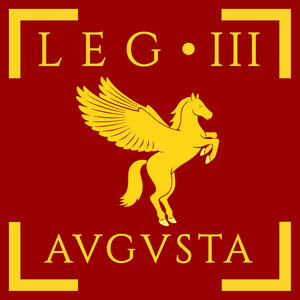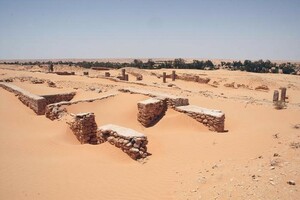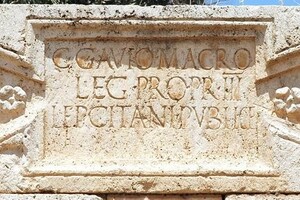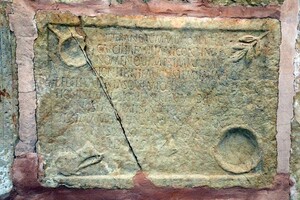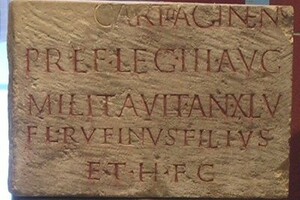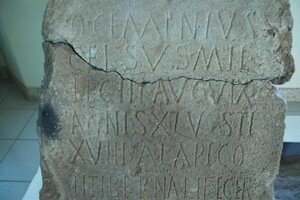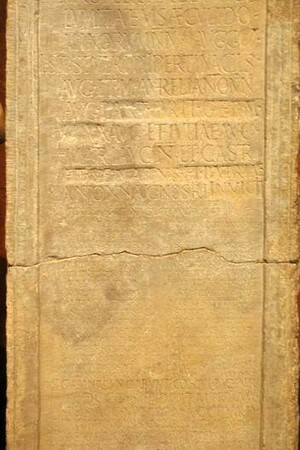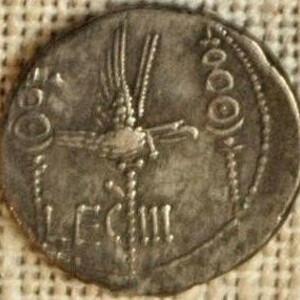Roman Legion - Legio III Augusta
Legio III Augusta (Third Augustan Legion) was a Roman legion formed in 43 BCE by consul Gaius Vibius Pansa by the order of Octavian Augustus.
Name: Legio III Augusta (Third Augustan Legion)
Dates of existence: 43 BCE – early 5th century CE
Logo: Winged horse Pegasus, Capricorn
Nickname: Latin: Constans, Perpetua, Pia Fidelis (Constant, Eternal, Loyal and Faithful)
Battle Path
- The baptism of fire for Legio III Augusta was participation in the Battle of Philippi in October 42 BCE. The legion fought on the side of Mark Antony and Octavian Augustus against the forces of Caesar's assassins, Brutus and Cassius. Antony and Octavian emerged victorious in this battle.
- In 36 BCE, Legio III Augusta was transferred to Sicily to fight Sextus Pompey, son of Pompey the Great, who controlled Sicily and thereby threatened the food and grain supply to Rome.
- Since 30 BC, Legio III Augusta has been located in Africa, but the exact location of its camp is unknown as the legion has been deployed many times in Africa.
- From 30 BCE, Legio III Augusta was stationed in Africa, but the exact location of its camp is unknown as the legion was engaged in various parts of Africa. Primarily, the legion was tasked with protecting against possible uprisings by Numidian and Mauritanian tribes. In 14 CE, the legionaries of Legio III Augusta built a road from Tacapae (modern-day Gabès, Tunisia) to Theveste (modern-day Tébessa, Algeria), where the legion's winter quarters were likely located at that time.
- From 17 to 24 CE, the legion was involved in suppressing a rebellion in Africa led by Tacfarinas, a deserter from the Numidians in Roman service. The legion was initially defeated by the rebels but later, after reinforcing and receiving help from Legio IX Hispana, it was, managed to defeat the insurgents.
- During this period, Legio III Augusta was the only legion in the Roman Empire commanded by a senator in the rank of proconsul of Africa. According to an inscription, one such legate of Legio III Augusta might have been Velleius Paterculus. Later, Emperor Caligula (ruled 37-41 CE) deprived this legion of the privilege of having a senator as its commander.
- At the end of Emperor Nero's reign (54-68 CE), Legio III Augusta was commanded by legate Lucius Clodius Macer, who in 68 CE, together with Galba, raised a rebellion against Nero and even recruited Legio I Macriana Liberatrix. However, when Galba became emperor in 69 CE, he ordered Macer's execution and the disbandment of the legion he had raised.
- During the events of 69 CE ("Year of the Four Emperors" ), Legio III Augusta sent detachments to support Galba, then Vitellius, and later Vespasian.
- In 70 CE, Emperor Vespasian transferred Legio III Augusta to Lambaesis (modern-day Tazoult-Lambese, Algeria) in Numidia. Here, the legion camped for about two centuries, defending the borders of the Roman Empire from Berber raids. Veterans were settled in Cuicul, Sitifis, and Thamugadi.
- In 115 CE, a detachment of Legio III Augusta participated in Emperor Trajan's Parthian campaign. Due to heavy losses in this detachment, Syrians were recruited to reinforce Legio III Augusta. Their tombstones have been found in Lambaesis.
- An inscription confirms the presence of Legio III Augusta in Lambaesis in the 2nd century and Emperor Hadrian's visit and address to the legionaries in 128 CE. Between 132 and 136 CE, a detachment of the 3rd Augustan Legion participated in suppressing the Bar Kokhba revolt in Judea.
- Legio III Augusta participated in the Parthian campaign of Lucius Verus, as well as in the Marcomannic War of Emperor Marcus Aurelius in 175 CE.
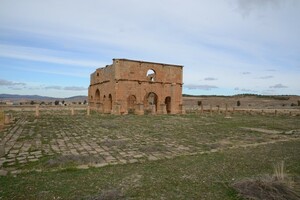 Ruins of the military base of Legio III Augusta in Lambaesis, Groma. Algeria. Lambaesis - ruins of an ancient Roman city in modern Algeria. 260 CE.
Ruins of the military base of Legio III Augusta in Lambaesis, Groma. Algeria. Lambaesis - ruins of an ancient Roman city in modern Algeria. 260 CE.
- Emperor Lucius Septimius Severus in 193 CE rewarded Legio III Augusta with the title Latin: Pia Vindex ("Loyal Avenger") for supporting his candidacy for the Roman imperial throne. Additionally, by Severus's order, several forts were built along the Roman Empire's border with the desert, such as Ghadames, Gheriat el-Garbia, Bu-Njem, and others.
- During the reign of Emperor Caracalla, Legio III Augusta participated in his war with Parthia in 216 CE. Under Emperor Macrinus (ruled 217-218), Legio III Augusta was reinforced with legionaries from other legions due to heavy losses from desert tribes.
- In 238 CE, a rebellion occurred in Africa led by Governor Gordian, whom his troops, together with his son, declared Roman emperors against the official emperor Maximinus. In these events, Legio III Augusta supported the lawful emperor Maximinus, but after his defeat and death, the victorious Emperor Gordian III (ruled 238-244) disbanded Legio III Augusta, and its former soldiers were transferred to legions stationed in Germany.
- In 253 CE, Emperor Valerian reconstituted Legio III Augusta and stationed it at its old base in Lambaesis, Africa. The reconstituted Legio III Augusta regained all its previously earned titles and was now called Legio III Augusta Iterum Pia Iterum Vindex ("Ever Loyal Avenger").
- In 254 CE, the legion's legate was Aurelius Reginus, possibly a future governor of Thebaid (a province in Egypt).
- After returning to its old base in Lambaesis, the reconstituted Legio III Augusta waged a long and persistent war with a coalition of Berber tribes, evidenced by a monument commemorating these events found in Lambaesis, built in 260 CE. This war was long and arduous, as evidenced by Emperor Maximian personally commanding the legion in his campaign against the Berber tribes in 289-297 CE.
- Emperor Diocletian (ruled 284-305 CE) awarded Legio III Augusta a new title Constans, Perpetua, Pia Fidelis (Constant, Eternal, Loyal and Faithful) for its military achievements. After this, Legio III Augusta left its base in Lambaesis and settled elsewhere in Africa, but the exact location is unknown.
- Legio III Augusta still existed at the end of the 4th century when the grave of a Christian soldier from this legion was found in Madaurus (Madauros, a Numidian city in North Africa, Algeria). From the early 5th century, there are no more sources mentioning the 3rd Augustan Legion, indicating that Legio III Augusta ceased to exist.
Related topics
List of Roman Legions, Legion, Legionnaire, Octavian Augustus, Legio I Macriana Liberatrix , Marcus Ulpius Nerva Trajan, Year of the Four Emperors
Literature
- M. Christol, "Sur quelques centurions de la légion III Augusta," in Zeitschrift für Papyrologie und Epigraphik 103 (1994)
- Y. Le Bohec, La IIIe Légion Auguste (1989, Paris)
- Y. Le Bohec, "Legion III Augusta," in Yann Le Bohec, Les légions de Rome sous le Haut-Empire (2000, Lyon) 373-381
- Jona Lendering, "Hadrian and His Soldiers. The Lambaesis Inscription," in: The Core of the Legions. Roman Imperial Centuria = Ancient Warfare Special 2010
- R. Canina, "Legion." A Brief Description of the History of Various Roman Legions.
